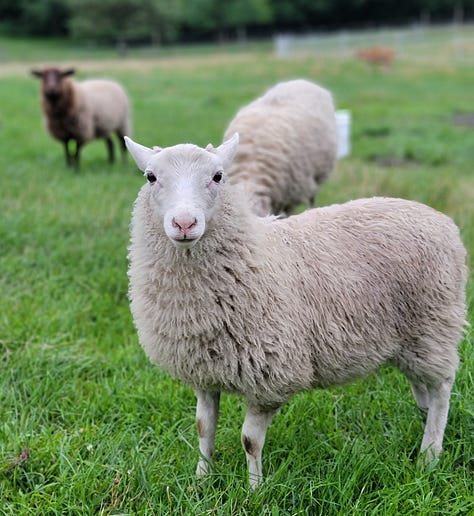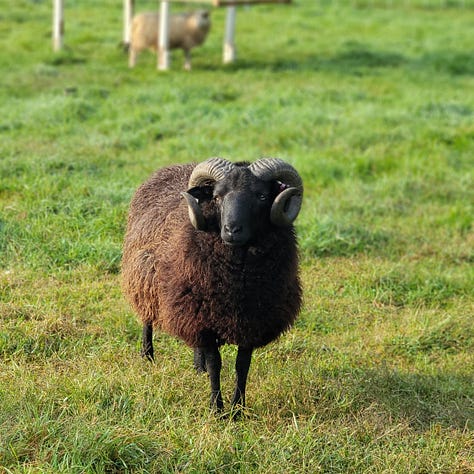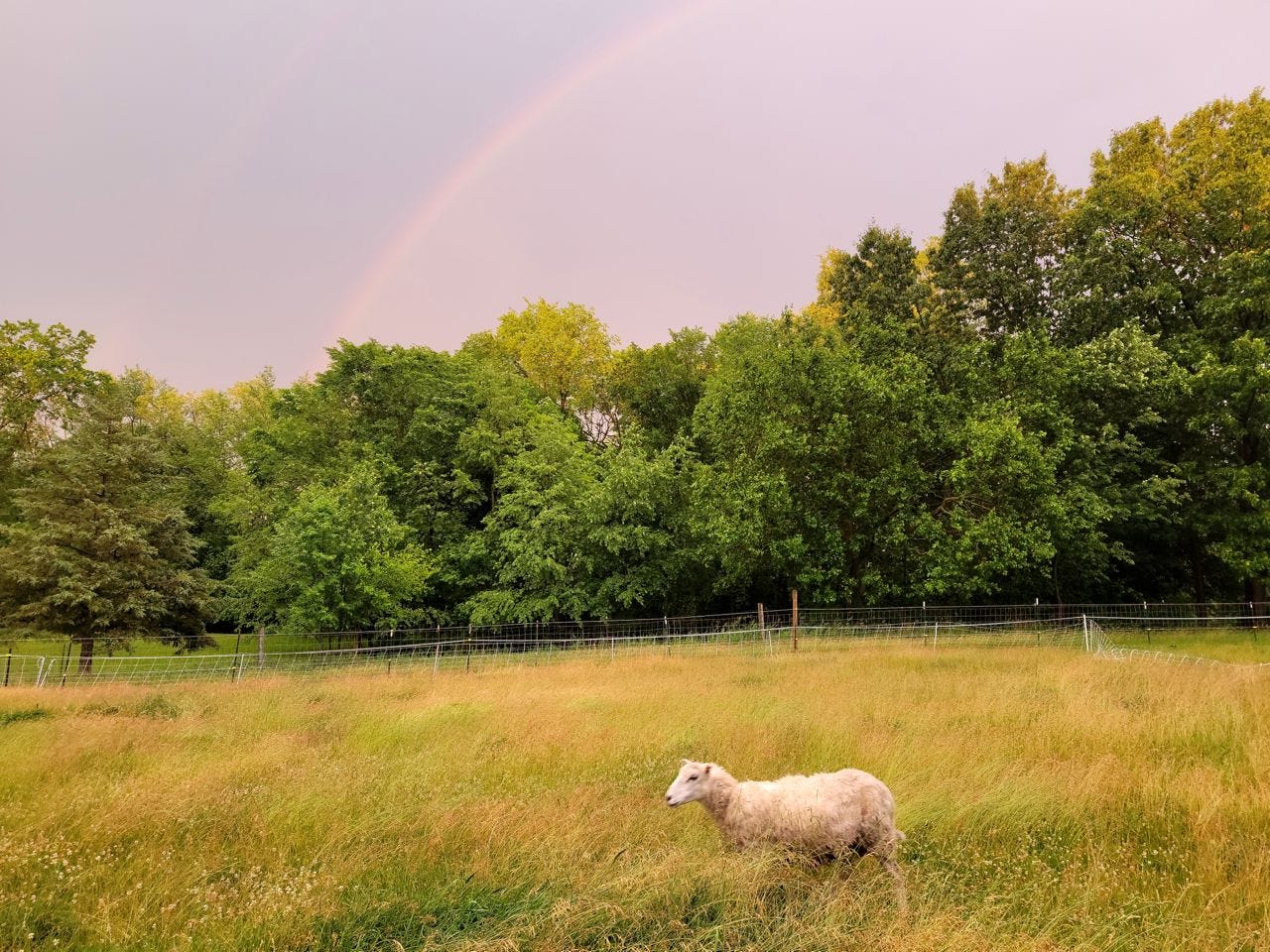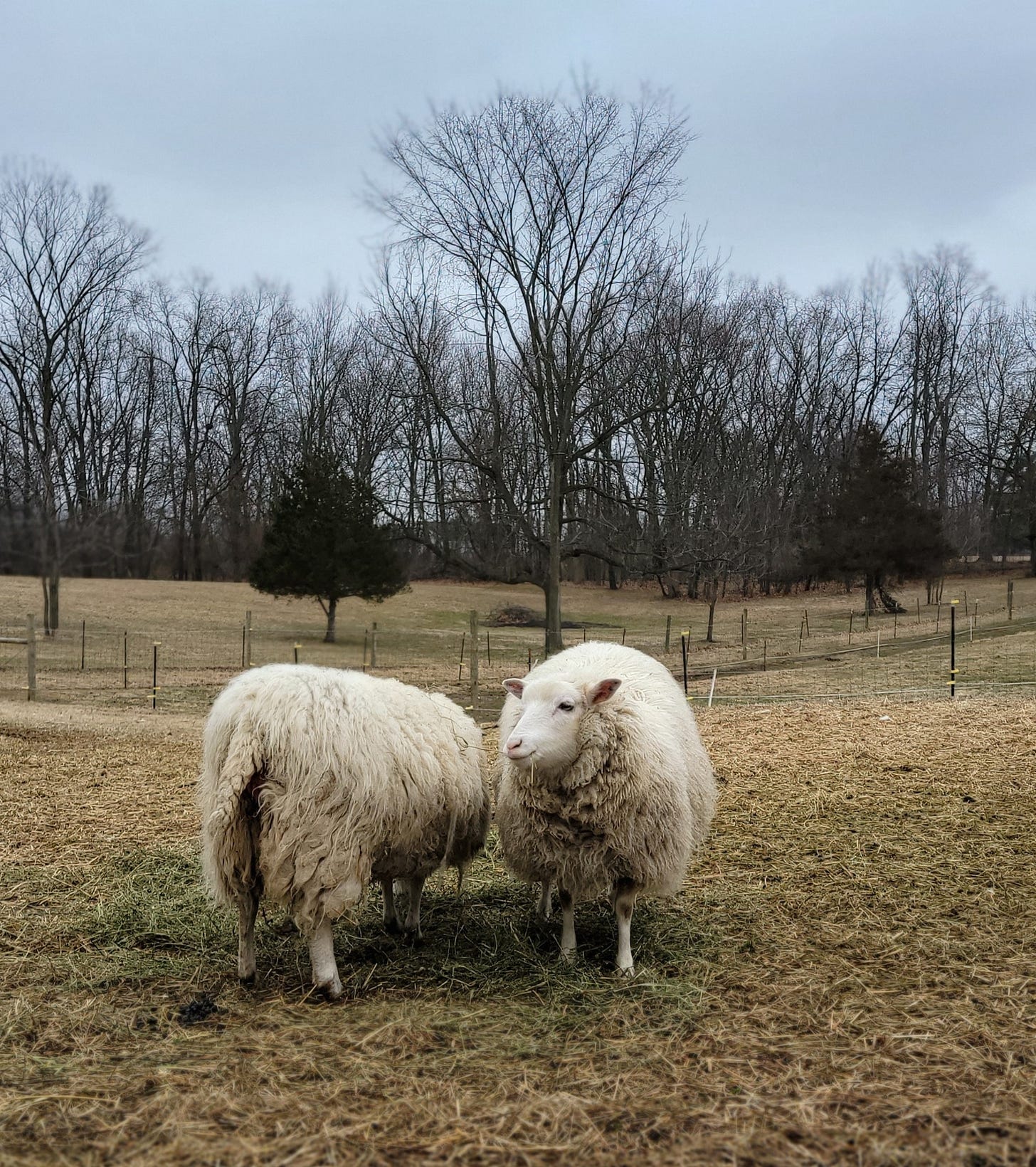I think the sheep are my favorite livestock. Specifically Joanna Graines, my original ewe and her two daughters, Lamby and TidBit. Joanna is the matriarch of the flock. She’s a big ewe who has plentiful milk and raises some enormous lambs each year. Because of her sweet disposition and fantastic job raising the biggest kids, I’ve retained two daughters from her. Lamby was her first, born in 2021 and TidBit was born this April.
Shhh, don’t tell the others! And don’t get me wrong, I love all the other critters we have on our homestead, and gosh, the goats are a close second, but I do think the sheep are my favorite. They stir something in my soul. The pastoral view of them grazing on the green pasture after an evening thunderstorm rolls through is one of my very favorite things to experience.
Shetland sheep are thrifty and hardy, maintaining condition easily throughout the year and lambing consistently each spring with twins. They’re attentive mothers and have wonderful fleeces.
As ruminating animals, sheep are gifted with the incredible ability to harness the sun’s energy and turn it into nutritious meat and useful fiber by breaking down perennial grasses with their four-chambered stomachs. It’s nothing short of magical, really.
During the spring, summer and fall, we raise our small flock of shetland sheep on pasture, exclusively. I diligently move them regularly to new areas of pasture. This practice is called mob grazing, or rotational grazing. It allows them constant access to fresh, clean pasture for grazing and breaks the parasite cycle while also giving already grazed areas time to rest and grow again. Properly managing our pastures is essential to the health of our animals.
In late fall, I butcher the lambs. It is not an easy task, but one that I am incredibly grateful to be able to do. I want to honor the animal not only in its life, but also death.
As winter comes in, we take the remaining flock off of pasture and bring them up to the shelter of our barn during the months of December-April. This winter, we will keep Joanna, Lamby, TidBit, Joni and Mouse as our breeding ewes along with Gravy, our ram.
So what do you need to know if sheep are a goal for your homestead?
Shetland sheep are a wool breed as opposed to a hair breed, meaning they will need to be sheared each spring where as hair breeds shed on their own. We have our sheep sheared in April and during this time, also trim their hooves.
They’re also seasonal breeders which means you can leave your ram with the ewes all year and do not have to worry about them being bred again in the summer. They tend to go in to heat in October/November and are bred for April lambs which works well for us.
If properly rotationally grazed, they should rarely, if ever need to be dewormed for parasites.
For our rotational grazing set-up, we use Premier1 fencing. It’s the best I’ve found and the sheep are very respectful of the electric netting fencing, plus it’s easy to move which is important when you need to do so regularly. Set yourself up for succes!
Shetland sheep are a dual purpose breed, wonderful for both wool and meat. Some breeds of sheep are also used for dairy! They’re perfect for a homestead!
Finally, they’re like potato chips. Bet ya can’t have just one! Really though, they are herd animals, so they need at least one other sheep buddy. :)
What sheep related questions do you have?












